Mexico: Day 2 - NOM 1107

One thing that's always bothered me about the tequila industry is the lack of information concerning where its spirit is made. Want to know who actually makes Campeón tequila? Or Peligroso? Or Aguila? It's all made at the same place: El Viejito distillery in Atotonilco. This morning Lou and I, along with El Viejito jefe Juan Núñez, drove east of Guadalajara into the Highlands to visit the Núñez family's facility.

White spirits like vodka and gin don't have the strongest reputation with whiskey drinkers because they're unaged. A large part of whiskey's complex flavor profile comes from the maturation period in wood, and most whiskies need ample time to develop these characteristics. It takes nearly a decade to make fully mature whiskey and sometimes longer to make an extraordinary batch, whereas vodka can be whipped up and bottled in a matter of days. I asked Juan how old his extra añejo tequila was and he said, "Three years old. Or eleven, depending on how you look at it." That's a joke around these parts of Jalisco, referring to the fact that it often takes six to eight years to fully ripen an agave plant. While whiskey producers need to decide years in advance how much spirit to actually distill, tequila producers face the same troublesome forecasting, but they face it in the field rather than the stillhouse. The price of agave therefore fluctuates depending on the demand for tequila because you need access to the plant year-round.
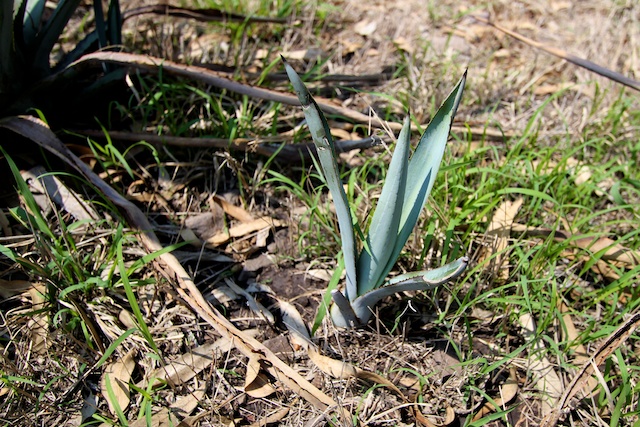
Wine makers talk about good vintages and bad vintages, but at least they get to start over each year. Agave farmers need to outlast seven vintages just to harvest one crop! Imagine it – you're three years into a maturation period and there's a flood. Or a drought. Or an infestation of insects. Your crop gets decimated by disease and you're back to square one. There's far more risk for the agave farmer, which is why agave has no beginning and end to its growing season. Optimally, you don't want to pick it during the rainy time of year, but each harvest is scheduled by necessity, rather than season. New crops of agave are sown by picking los hijuelos (the children) of the mother agave plants that grow nearby and planting them in rows or prédios (plots). Like whiskey, there's talk of a growing bubble, but it's based on the supply of mature agave rather than mature tequila.
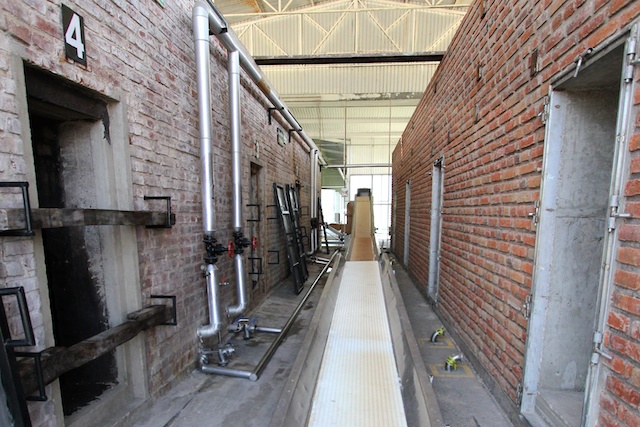
The first step in the tequila making process, after the piñas have been harvested, is the initial roast. You need sugar to make alcohol, so you need to roast or steam the agave in order to concentrate its tough, fibrous interior into a soft and sweet pulpy fruit. El Viejito uses large, walk-in ovens or hornos that fill with steam, cooking the piñas for sixteen hours before a six hour rest is imposed. After simmering for a bit, the ovens are turned back on for an additional fourteen hours.

The floors of the ovens are lined with wooden planks that raise the piñas off of ground, allowing the steam to reach all sides equally. As the agave cooks the juices begin seeping out from within. The first liquids to be excreted are the mieles armagas or the bitter honey, which are discarded through a drain on the oven floor. After those juices are siphoned off, the drainage lever is switched to capture the mieles dulces or the sweet honey, which is pumped into a tank and later added as part of the fermentation.

After roasting, the agave piñas are shredded and moved up the conveyor belt into a press, where the fibers can be flattened to squeeze out every bit of sugary juice possible. There are four presses at El Viejito, so the fibers get squeezed four times consecutively. There's a nozzle that extends over the press that sprays the fibers with water to rinse off any sugar still clinging to the agave. The juice and water both are captured in a tray underneath and pumped into a holding tank where they await fermentation.
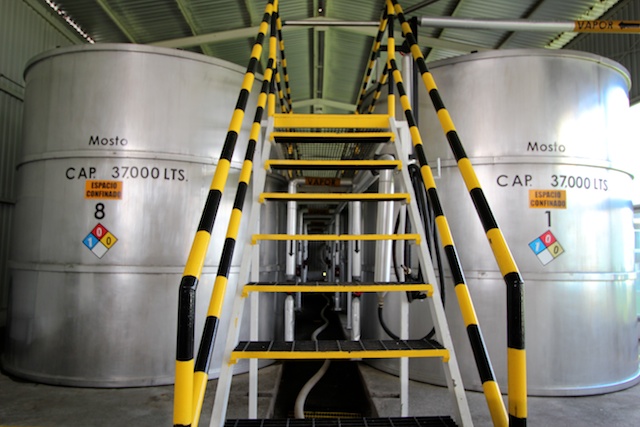
Fermentation of the agave juice or mosto takes place in these 37,000 liter stainless steel tanks, where the heat and the temperature of the process can be controlled. The process off converting sugar into alcohol produces a large amount of heat, as well as carbon dioxide, which can kill the yeast if not regulated. Back in the day, Juan said, the workers would add ice cubes to the tank in order to cool down the mosto. Today there's cold water pumped in from a well to lower any dangerous levels. Because there is no water system in the area, all the water at El Viejito comes from an underground well next to the site.
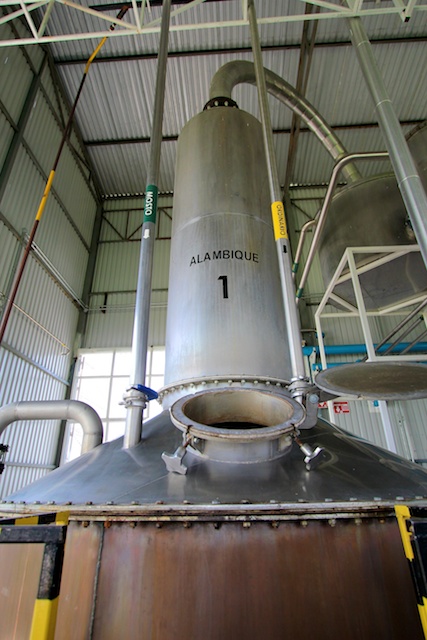
The process of tequila distillation at El Viejito is almost exactly like single malt whisky. Unlike Bourbon, where the grain mash is literally added to the continuous column still and boiled inside, both El Viejito tequila and single malt whisky are distilled in batches on a pot still using only the sugary remnants of their base material. The wort or mosto is heated, the heads and tails, or cabezas y colas, are separated, and the process is done in two different batches. The first distillation is called the low wine or ordinario and comes off the still at around 35%. The second batch is the actual whisky or tequila at a much higher percentage, usually in the high sixties.

After distillation the tequila is either bottled as blanco (El Viejito make both a 42% and 55% silver tequila) or it's put into ex-Bourbon barrels for maturation. Juan uses his casks more than once much like a single malt producer, therefore he needs to make distinctions between three years in first-fill wood, second-fill wood, etc, as older barrels will add decreasing amounts of richness to the spirit. Most of the casks at El Viejito are from Heaven Hill, but we did see a few Beam barrels floating around.
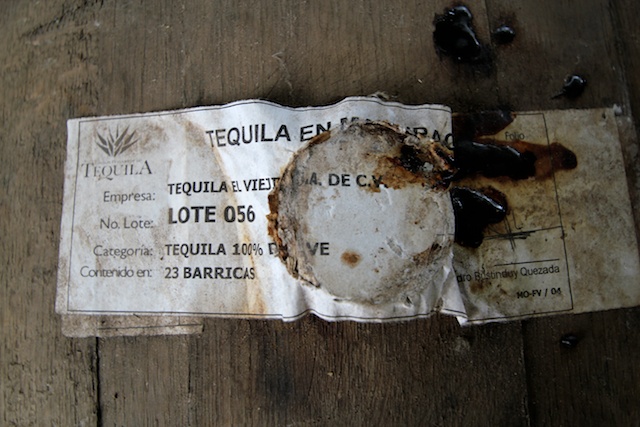
What really blew my mind was the fact that all barrels in Mexico are sealed with a label from the CRT - Consejo Regulador del Tequila, which mandates that all samples pulled be verified and done with their permission. The same type of thing exists in Scotland, but they don't actually seal off the barrels and look for torn labels to see if you're being honest.
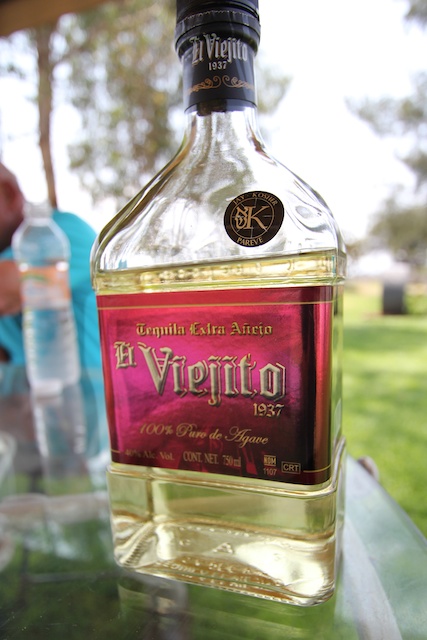
I could tell that Juan and I were really going to be friends when he brought out his extra añejo expression – three years in the barrel, yet it's the same color as most reposados. Like me, Juan doesn't believe in replacing the vibrant flavor of good tequila, distilled from only the finest agave, with extracted vanilla and wood tannins. He uses only refill barrels to age the extra añejo, making sure that the peppery spice of the tequila still shines through the mellowing effect of the wood.
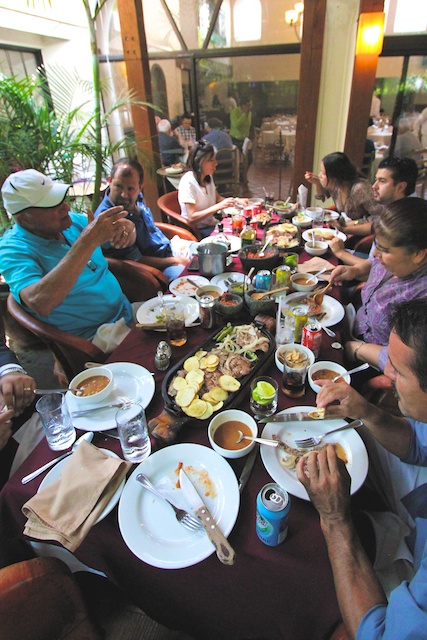
And after a long day at the distillery it was time for lunch. Juan rounded up his employees and took us to El Bosque, a local Guadalajaran restaurant renowned for its flavorful carne asada. We shared tequila, plates of chillies and salsa, and stories about telenovelas, but Lou really stole the show, despite the fact that he doesn't speak a word of Spanish. His sailor's mouth and mobster mentality always blend beautifully with his heart of gold.
"David, how do I tell this guy to fuck off?" he said with a smile, squeezing Juan's arm while laughing hysterically.
"Chíngate, Lou."
-David Driscoll
